“…and diggings revealed unforseen finds” – Reports from the Capitalocene
Andrea Anderson, Michael Baers, Aikaterini Gegisian , Riccardo Giacconi
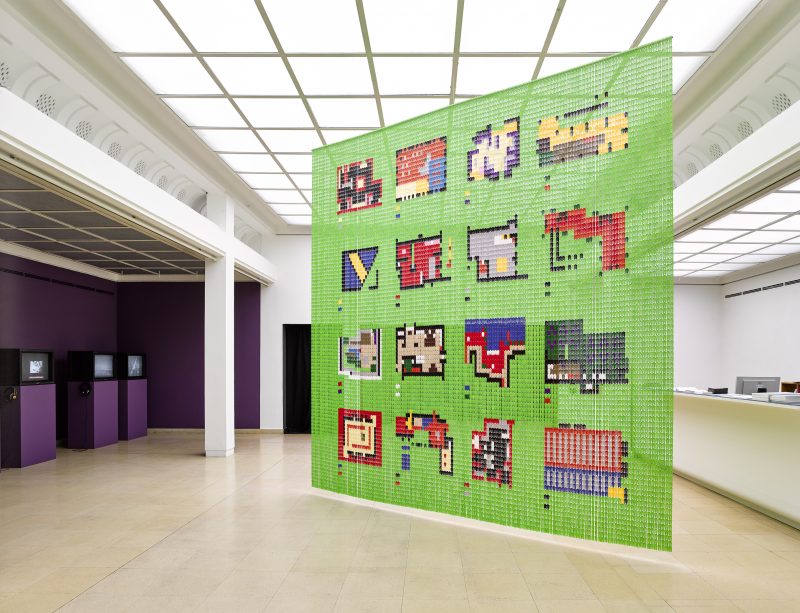
The exhibition “… and diggings revealed unforeseen finds” – Reports from the Capitalocene shows new works produced in Innsbruck by the participants of the Fellowship Program for Art and Theory at Künstlerhaus Büchsenhausen 2018-19. In their respective projects, Angela Anderson, Michael Baers, Aikaterini Gegisian and Riccardo Giacconi have dealt with forgotten as well as under-examined social and political narratives that could prove relevant for an understanding of contemporary societal dynamics.
The contributions of the four artists merge into a polyphonic, virtual narrative covering various aspects of the historical development of our present – a poetic report from a time that is gradually freeing itself from the monotheism of Cartesian rationality. This monotheism has generated the Janus-faced figure of the Capitalocene, constantly attempting to disguise its nature by trivialising the social and cultural consequences of the advancing exploitation of the earth as a resource. In the Capitalocene, everything, not only the Earth but also human beings, turns into a resource. Critical examination of the mechanisms of exploitation and concealment is therefore all the more important, but it is also vital to unearth spillages and reconsider them. To a certain extent, this exhibition intends to do exactly that: In her multimedia, cinematic installation, Angela Anderson focuses on contemporary, realpolitical, feminist alternatives to the machines of androcentric, extractive capital that destroy nature and culture. The discreet signs of everyday life that accompany the transition of a society to totalitarianism are the subject of Michael Baers’ audio piece, whose narrative thread is set in the spring of 1933, when the National Socialists celebrated successes at Innsbruck’s municipal elections. In her six-channel video work, Aikaterini Gegisian formulates a feminist iteration of the representation and mediation of the European community project, as it was displayed in US newsreels in the 1940s and 1950s, primarily as a necessarily networked reindustrialization project for post-war Europe. Finally, in a multimedia installation Riccardo Giacconi addresses the “conservative utopia” of a housing area realized in the 1970s under the name Milano 2 by the investor Silvio Berlusconi as an ingratiation with the capital, a proto-populist residential architecture between pseudo-traditionalism and new media.
Riccardo Giacconi’s contribution stands out when entering the exhibition. A large, bright green curtain incorporates 16 colorful, geometrically arranged patterns, the surface character of which reminds of the visual design of video games in the 1980s. Comprising hundreds of identical plastic elements, the work uses a generic form of room divider in Italy – the “standard curtain” between inside and outside, between front room and back room, between public space and private retreat. In a way, Giacconi’s curtain too fulfills this function: two other components of his work are concealed behind it – a book and an audio piece. The title of the book, Milano 2, is found on the cover: the work is a printed documentation and an advertisement in one – a now historic testimony to a domestic utopia that Berlusconi constructed in the 1970s and which, from today’s perspective, represents an experimental set-up for his subsequent, extremely successful amalgamation of capital (of dubious origin), media (integrated cable TV), and intoxicating feel-good populism. Leafing through the book we are strolling, so to speak, through the various areas of the housing settlement that Berlusconi conceived for an aspiring middle class – as an escape from social unrest in the city, out into a natural idyll free from class struggle and manifest ideologies. Finally, in the book we also find the geometric shapes that Giacconi has reproduced on the curtain: These are floor plans of residential zones and housing units in Milano 2; their bright colors intended to awaken desire and longing for such a place. The nearly 10-minute audio piece, which visitors can listen to while leafing through the book, serves as a counterpoint to this vision free of all contradiction. The recording reproduces passages from a performative reading that took place at Künstlerhaus Büchsenhausen in March 2019, based on an autobiographical text by cultural journalist Carlo Mazza Galanti, who spent his childhood in Milano 2. Mazza Galanti tells of partly disturbing memories, clinical cleanliness, a perfect staging of nature, mafioso neighbors, the sense of simultaneous good fortune and shame at having grown up there. And he recalls the somehow tortuous realization of having participated in an historically inconspicuous but significant project–the ideological backbone of which he later rejected as an adult–, all of which could not blot out, however, his memory of a happy childhood.
Historical milestones are also the focus of the multi-part film project by Aikaterini Gegisian. While Giacconi’s work follows the narrative thread of personal experience, Gegisian’s installation is based almost exclusively on found documentary film material. Third Person (Plural) is an examination of the multifaceted image of the new, “united Europe” after the Second World War, as formulated and conveyed in US newsreels from those years. The relevant period begins immediately after the war (1946) and ends with the signing of the Treaties of Rome in 1957, which laid the foundation for the European Economic Community (EEC). Most of the footage comes from the Library of Congress in Washington D.C. and includes newsreels as well as documentaries commissioned by the U.S. government, which are correspondingly ideological and propagandistic in tone. In complex, intermittently rapid film montages, Gegisian articulates her interest in the way in which the European reconstruction and integration project and the influence of US-American foreign policy interests on it are represented in these films. Here, the artist is concerned not least with a feminist critique of this portrayal, which she also expresses on the level of pictorial montage. Furthermore, her observation focuses on the continuous process of translating supranational ideas into nationally connoted illusions of community – a process that, according to Gegisian, oscillates between imagined communities of national character and the universalism of the United Nations, between existent US-American federalism and the sought-for European integration, and must be regarded at the same time as a manifestation of globally expanding capital. For it also becomes clear that the beginning of European integration was marked by the reindustrialization of the continent, above all by the coordinated production of coal and steel, which always goes hand in hand with the expansion of extractive capital. The respective episodes are dedicated to the following individual topics (listing: Aikaterini Gegisian):
The Episodes:
Episode 1
Prelude: Brotherhood, 4 min. 45 sec.
Constructions of American folklore and American national identity by the post-war movement the Brotherhood of Men: American identity as a culture without religious and racial segregation. Trade, commerce and exchange represented as an element unifying workers within American cultural life.
Episode 2
The Long March, 12 min. 52 sec.
The renegotiation of the image of the “West” after the Second World War, shaped by US foreign policy and the decline of European nations against the transitory delirium known as the “Cold War”. American identity as a counterpoint to communism. Europe becomes Western Europe. The USA as leader of Western civilization’s forward march – belief in progress. European cultural standards continue to influence American culture.
Episode 3
The Good European, 12 min. 16 sec.
European identity: the common market. Europe as a confederation of states, based on economic principles, shaped from the American national myth of a melting pot of different cultures. The historical conception of the EU as a common market for the development of industry and the production of goods.
Episode 4
Centrifugal, 10 min. 38 sec.
From the East-West division during the Cold War to the North-South division in the PIIGS era. Playing centre off against periphery as a process splitting the European geopolitical map. Grexit and Brexit as a legacy of this drift apart, induced by centrifugal forces. The transfer of the European idea of identity into specific national ideas (Europe of Nations). Nostalgia and historical memory.
Episode 5
The Girls are Marching, 12 min. 41 sec.
The role of Hollywood and the American military in the production of images and the construction of a spectacular industrial military complex. The development of new camera technologies for the recording, measuring and testing of new weapons. The way such images have influenced our understanding of history and created a dominant visual language. The camera’s role in spreading the notion of progress. The articulation of the idea of progress by women who joined the military and also assumed leadership in other fields.
Episode 8
Coda: Third Person (Plural), 7 min. 54 sec.
An initially quiet, then gradually delirious gathering of women, men and children, which accelerates more and more through a self-confident dance and so forms a collective corpus. A rethink, a re-reading of the gender relations that underpin the post-war period and the associated national ideologies.
Extractive capital and its destructive effect, not only on the environment but also on the people who are exposed to it – most of them involuntarily – is also the focus of Angela Anderson’s multimedia installation. In the left half of the back room of the Kunstpavillon, the artist has installed a multimedia ensemble consisting of a three-channel video, a large map image, and a photographic work. The title Three or more Ecologies refers to a short text of the same name by Félix Guattari. In it, the psychoanalyst and ecosoph presents an intersectional approach that conceives ecology as an ethical-political articulation between three ecological registers: the environment, social relations and human subjectivity. The three-channel video unambiguously titled For the World to Live, Patriarchy Must Die , marks the first part of the investigation. In it, Anderson brings together status reports from two seemingly disparate poles of our globalized world, which have much more in common than one might initially suspect: From the Bakken region in North Dakota, USA, where ruthless oil extraction through fracking is massively endangering the earth, the climate and the health of the people living there, and from the autonomous region of Rojava in Northern Syria, where oil is extracted in order to keep the war going with the foreign currency thus gained. The film grants a voice to female resistance in both places: e.g., to representatives of “Ft. Berthold – Three Affiliated Tribes Reservation” (Mandan, Hidatsa & Arikara) in the USA, as well as to women from Jinwar – the village of “free women”, which is regarded as symbolic lived opposition to the war-mongering patriarchy. Excerpts from interviews with radical feminist theorist Silvia Federici on the subjects of ecology, feminism and emancipation alternate with recordings of the respective situations on site in North Dakota and Rojava, as well as with statements by activists such as Dilar Dirik (Kurdish Women’s Liberation Movement) and Ladonna Tamakawastewin Allard (storyteller and tribal historian of the “Standing Rock Sioux Tribe”, initiator of the pipeline blockade there). The post-national, radical-democratic project of an ecological and feminist society in Rojava occupies a prominent position. The installation is supplemented by an earthy map, on which countless small lights shimmer through a dark layer of earth. North Dakota’s gas combustion plants have been mapped out here, conveying an impression of the gigantic waste involved. Finally, the flame in the photographic work presents a striking symbol of unleashed extractive capitalism’s symptomatic handling of man and nature: the plants burn natural gas day and night without interruption. The gas comes up together with the oil as a by-product but gets wasted into the atmosphere due to the lack of processing infrastructure, which itself is caused by the unprofitability of its exploitation.
Finally, Michael Baers’ contribution to the exhibition provides a rather quiet, even intimate counterpoint, although unsettling upon closer inspection. His installation The Past is an Arrow into the Future is an artistic investigation of the discreet transition from a democratic to a totalitarian system, which never happens suddenly but creeps into the lives of the individual and the community in small, non-linear stages. The artist researched in archives in Innsbruck and, in close exchange with local historians and a meteorologist, he traced the social atmosphere of spring 1933 in Innsbruck, when the NSDAP became the strongest faction in the city parliament after the local elections. The outcome of this research finds expression in the design of the exterior spatial structure of the installation, which may easily cause discomfort due to its shape and color. An inconspicuous door, marked only by a round golden handle, leads the visitors into a small, parlor-like room. Here, we are confronted by a surreal-looking arrangement: three old photographs on the right-hand wall show staged family idylls – in a boat by the lake, in front of a crucifix on a hiking trail, and in front of a mountain hut. Three light bulbs seem to energetically conserve the life of this long gone time, quasi as memory. To the left of the room stands a corner bench whose armrests are decorated at the side with the heads of mighty eagles, while the backrest is covered in neo-Gothic ornamentation. The bench was produced at the beginning of the 20th century by the Innsbruck joinery Colli, in a characteristic style particularly popular to the taste of Catholic conservative bourgeoisie. While sitting on this bench one can listen to a story told by a female voice. In her diary, a Russian Jewish woman from St. Petersburg, who lives in England, describes a 16-day visit to Innsbruck at the end of April / beginning of May 1933. The fictional narrative unfolds along a series of documented events during that time, which occur either as media reporting, observation on the spot, or as the voice of the local tourist guide Johannes, who adopts the standpoint of the informed local. From the Hotel Alte Post in Innsbruck, where the protagonist is lodging, the listener accompanies the narrator on her daily encounters and observations on walks through the city and its surroundings. Ultimately, they also witness the violent riots by NSDAP supporters at the beginning of May, after the local council elections have been won, circumstances eventually leading to the protagonist’s departure. The narrator’s personal tone, the apparently accurate descriptions of places and events, the play with historical components whose degree of fictionalization remains uncertain, all shift the perceptual boundary between then and now, between familiarity and discomfort, between compassion and dismay, between memory and developing awareness.
Andrei Siclodi
The participating artists:
Angela ANDERSON is an artist and filmmaker working at the intersection of philosophy, ecology, economics, migration, media, and feminist & queer theory. Central to her work is an awareness of the intimate connection between media production, memory and apprehension, and the potential of audio-visual media to open up new lines of flight.
angelaolgaanderson.wordpress.com
Michael BAERS has previously researched cultural politics in Israel and Palestine, in 2014 publishing online with the Haus der Kulturen der Welt a lengthy graphic work about the 2011 Picasso in Palestine project, An Oral History of Picasso in Palestine. He has also published comics and texts on contemporary art and artistic research, cultural politics, and urbanism, contributing to a variety of publication projects and internationally recognized journals, such asA-Prior, the e-flux journal, and Vector – critical research in context.
Aikaterini GEGISIAN is an artist of Greek-Armenian heritage that lives and works in the UK and Greece. Building on her contribution to the Armenian Pavilion, 56th Venice Biennale (2015 Golden Lion for best national participation), she has over the past two years developed a series of new commissions exploring the role of images in the construction of national and gendered identities.
gegisian.com
Riccardo GIACCONI studied fine arts at the University IUAV of Venice. His work has been exhibited in various institutions, such as ar/ge kunst (Bolzano), MAC (Belfast), WUK Kunsthalle Exnergasse (Vienna), FRAC Champagne-Ardenne (Reims), tranzitdisplay (Prague), MAXXI (Rome), Fondazione Sandretto Re Rebaudengo (Turin) and at the 6th Moscow International Biennale for Young Art. He has presented his films at several festivals, including the New York Film Festival, Venice International Film Festival, International Film Festival Rotterdam, Visions du Réel and FID Marseille, where he won the Grand Prix of the international competition in 2015. In 2007 he co-founded the collective Blauer Hase, with which he curates the periodical publication Paesaggio and the Helicotrema festival.
riccardogiacconi.com
The participants of the events:
Miguel AMADO is a curator, currently Director and Curator of Cork Printmakers, Ireland. His practice explores alternative narratives of art history and art markets, revealing subaltern art practices and considering the useful dimension of art. He has been collaborating with Aikaterini Gegisian in recent years, curating her first film survey and commissioning various works for Middlesbrough Institute of Modern Art, in England, where he served as Senior Curator between 2015 and 2018.
David KAZANJIAN is Professor of English and Comparative Literature at the University of Pennsylvania and Co-Director of theTepoztlán Institute for Transnational History of the Americas. His areas of specialization are transnational American literary and historical studies through the nineteenth century, Latin American studies, political philosophy, continental philosophy, colonial discourse studies, and Armenian diaspora studies. He is currently at work on two book-length projects. The first sets radical aesthetics in the contemporary Armenian diaspora against the diaspora’s melancholically nationalist understandings of genocide. The second finds anti-foundationalist critiques of dispossession in the late seventeenth and early eighteenth-century Afro-Indigenous Atlantic.
Christian QUENDLER is associate professor in the Department of American Studies at the University of Innsbruck, where he teaches film and media. His most recent book is The Camera-Eye Metaphor in Cinema(Routledge, 2017).
Annie SPRINKLE‘s & Beth STEPHENS‘ work reflects two lines of force within radical feminist art. While Stephens (born in 1960 in Montgomery, West Virginia) was intervening in the gallery space and within video art beginning in the late 1980s, introducing representations of lesbian and queer culture, Sprinkle (born in 1954 in Philadelphia) was working to undo the dominant codes of representation in pornography, as a porn actress and activist beginning in the 1970s, campaigning to defend the rights of sex workers. Their coming together as an art duo in the early 2000s represents the alliance of these divergent discourses as it gives way to “ecosex” art and activism.
Nina TABASSOMI is a curator and theatre scholar. Having worked in Berlin (Based in Berlin, KW Institute for Contemporary Art), Kassel (Fridericianum) and New York (Ludlow 38), she is now director of the TAXISPALAIS Kunsthalle Tirol, a position she has held since the beginning of 2017. Among others, she curated the group exhibitions Infrastructures of Pain, Accentisms and the Trilogy Lieben-Sex-Lachen as well as solo exhibitions by Eric Baudelaire, Emeka Ogboh and Maryam Jafri.
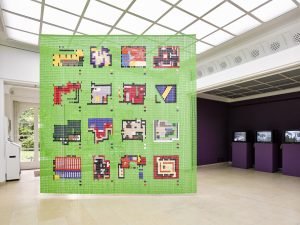

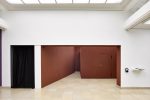
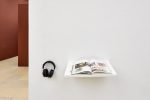
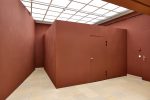
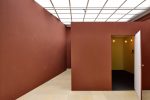


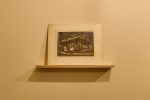
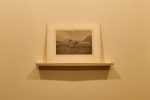
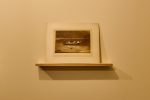
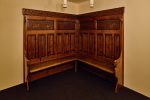
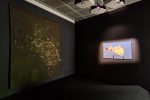
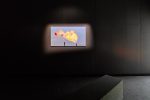
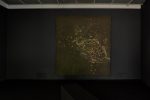
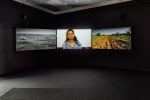
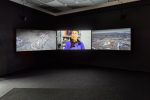
Andrei Siclodi